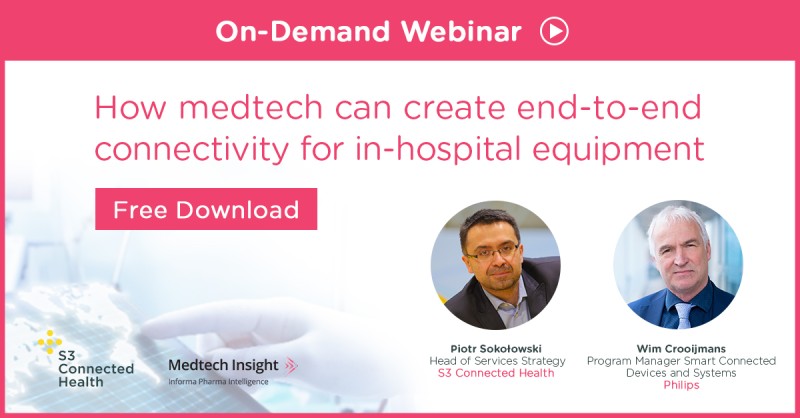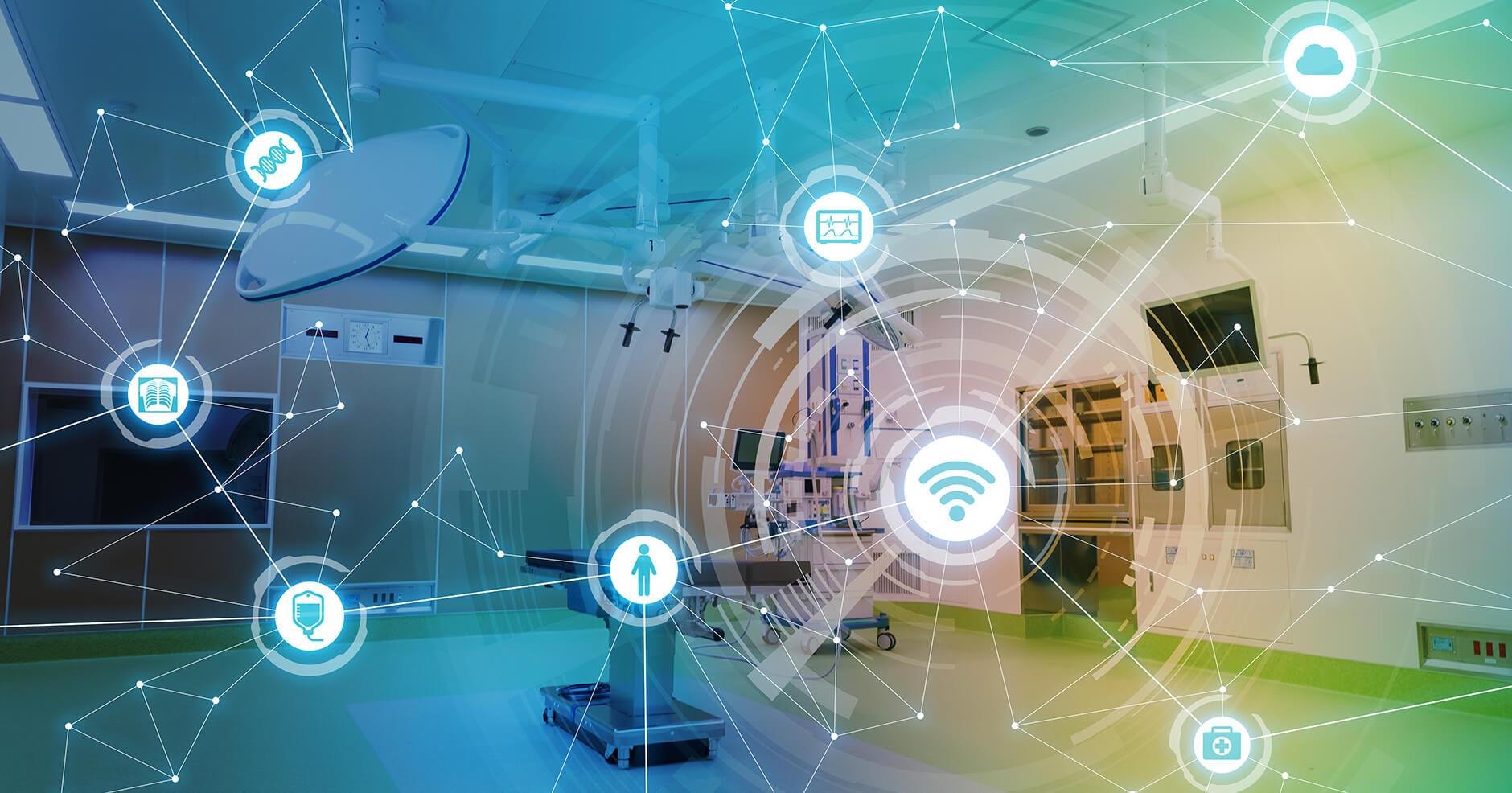Connected devices are set to play a vital role in the future of healthcare. As early as 2015, research recognized that moving to connected devices could save the US health industry as much as $30bn annually, proving that continued reliance on unconnected devices alone comes at a real cost.
Many connected medical devices can now be found in hospitals across the world, enabling better, bespoke care for patients and helping healthcare professionals provide the best support possible.
In order to be effective, these connected devices need access to data from systems both inside and outside the hospital. Getting data from the hospital to medical device vendors’ premises has been a particularly difficult challenge. However, hospitals are sensitive environments and selecting the right connectivity protocol to transmit the required information safely and effectively – and with the consent and alignment with all hospital stakeholders – is critical to getting data out of the hospital and back to medical device vendors so they can improve device functionality and, ultimately, drive better patient outcomes. (More on that here).
There are many protocols to choose from, and each one has its benefits and drawbacks. In this blog, we’ll explore the connectivity options for in-hospital medical devices, what matters most to hospitals, and how to create a solution that works best for all parties.
Identifying the right connectivity option for your device
There are now a range of options to consider when connecting in-hospital devices to hospital networks, from Ethernet, to public and private Wi-Fi, to Cellular, Cellular IoT, Bluetooth, LoRa, and more.
It’s worth bearing in mind, however, that medical devices have to function in a range of different environments, from modern, high-tech hospitals, to more traditional settings where even WiFi coverage and bandwidth may be lacking. When selecting a protocol, device creators need to ensure they can secure reliable connectivity in both environments.
To get an idea of which forms of connectivity are most popular, we asked attendees of a recent webinar how they’d prefer to connect their in-hospital devices: the most popular options were hospital Ethernet (31.4%), and private hospital Wi-Fi (29.4%). Other options included Cellular, Cellular IoT, and Bluetooth (all 7.8%), and 3.9% for public Wi-Fi. A further 9.8% weren’t sure.
'Which connectivity option would you choose to connect to your in-hospital devices?'

The most popular on this list aren’t surprising: Ethernet and Wi-Fi are the most commonly available systems in hospitals, which may make them easier to connect to. But in actual fact, all these options are valid; what’s good or bad depends solely on what the device in question needs to achieve, the data that device creators require, as well as its surroundings:
- Connecting a device to an EHR via existing hospital infrastructure, for example, wouldn’t be sufficient, as this connection won’t provide all the data vendors will require from their device. In this scenario, device vendors would need a direct connectivity connection from their devices – one that’s independent to or in addition to an EHR – to reap the real benefits of the data they collect.
- Large capital equipment like MRIs, for example, may use up most of the available bandwidth in a hospital, meaning other devices must find alternative options for connectivity.
- Devices connecting with patients inside the hospital may require Bluetooth or public Wi-Fi for ease of access; when sharing sensitive information from a procedure, however, public Wi-Fi or 5G might not offer the stringent data privacy required.
- Sharing consumable tracking data, device logs, and facilitating bandwidth-intensive software updates are all different use cases with varying requirements on timeliness and bandwidth. Protocols must be matched to each case accordingly, with many requiring a robust network with sufficient capacity to manage very large or complex files.
So, if the answer here is ‘it depends on the use case’, how do you decide on the best connectivity option for your in-hospital medical device?
What do hospitals want from connected medical devices?
If every network protocol has its place, you’d be forgiven for thinking it’s only cost holding device creators back from front loading solutions with every possible network protocol available.
Of course, in reality, it’s not as simple as picking the one (or ones) that seem to work best for your device and its stakeholders. Other factors need to be considered.
A recent poll we conducted in November last year reveals how hospitals think about in-hospital connectivity. We asked 50 hospitals in the US if they’d be willing to have digital devices connect to their networks: 15% said yes, 10% said no; a staggering 75% said they were ‘not sure’.
It may seem like a strange response. But on further inspection, the majority of ‘no’ and ‘not sure’ respondents had other concerns that meant they couldn’t give positive – or definitive – answers.
Many underlined the need for devices to fit into the existing hospital cybersecurity framework, and as such, explained they’d only be able to give an educated answer once they’d analyzed further information, or received relevant forms like an MSD2.
It’s important to clarify that hesitation doesn’t mean hospitals objected to the concept of device vendors collecting data. Rather, they’re looking for vendors to prove the security of their proposition before considering it viable.
What, then, is required to pass muster?
Proving the viability of in-hospital medical devices
It may feel like a bit of a Catch-22 situation: any network protocol choice must be based on the device itself and hospital needs and requirements, but at the same time, hospitals aren’t entirely sure what those requirements are until a suggestion is made.
The reality is not quite so hopeless. Medical devices are incredibly varied in design and function but while there’s no one size fits all solution, much can be clarified by going directly to hospital users: the staff, patients, and other stakeholders and identifying how you, as a device creator, can maximize value. Device vendors need to be proactive here and understand the needs and constraints of hospitals, and communicate that effectively.
Once you’ve identified where value can be added, the essential next step is to build in safety and security from the very start. As the figures above show, the importance of security cannot be overstated. Work with hospital IT and make it as easy as possible to get your device up and running; reassuring them of the security in place.
If you accomplish both of these and propose a comprehensive framework for a solution – including the network protocols required and necessary cybersecurity protections that go along with it – you’re likely to be well-received by any hospital, and one step closer to bringing the benefits of your device and solution to the patients and healthcare professionals who need it.
To discuss connectivity options for a particular device or project, contact us here.

For more information on end-to-end connectivity for in-hospital devices, watch the full webinar with Piotr Sokolowski of S3 Connected Health and Wim Croojimans of Philips:


